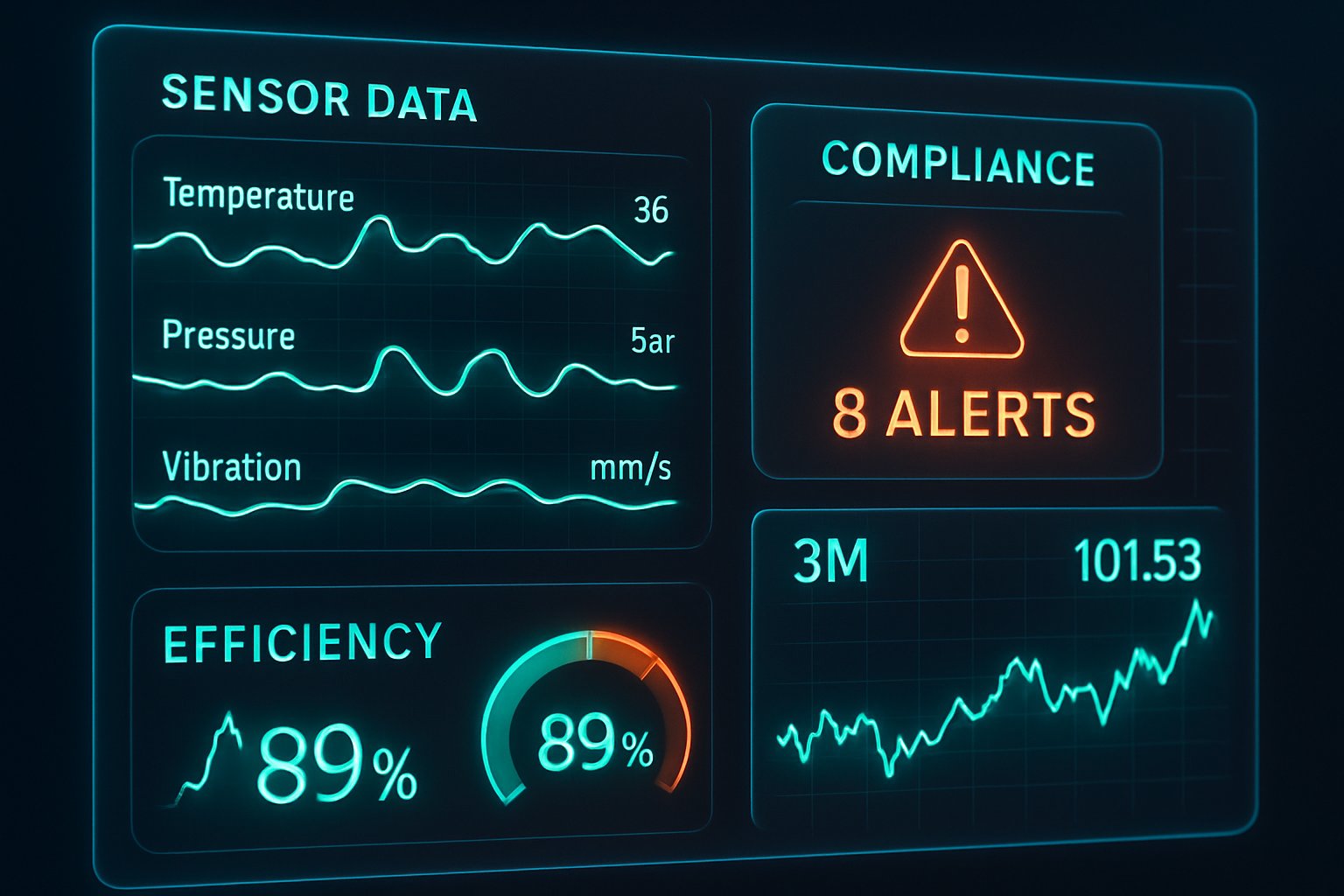
AI CERTS
7 hours ago
PFAS Rules Boost Industrial AI Application Market
This article unpacks the rulings, technologies, and investment signals shaping the next 24 months. It highlights pollution tracking, compliance automation, and liability management challenges facing corporate leaders. Finally, readers will see how real-time data could influence MMM stock impact and broader markets. Nevertheless, each development demands careful regulatory response planning to avoid new penalties.

Evolving PFAS Rules Pressure
EPA finalized strict MCLs for PFOA and PFOS at 4 ppt in April 2024. Furthermore, the agency designated both chemicals as CERCLA hazardous substances in May 2024. Subsequently, a Section 102(a) framework rule was promised during September 2025 filings. These milestones created a decisive regulatory response wave across water utilities and manufacturers.
Many utilities now consider industrial AI application pilots to satisfy sampling mandates. In contrast, industry groups argued the rule could cost up to $3.2 billion annually. Therefore, mounting pressure compels faster monitoring and defensible data. Consequently, 3M’s legal exposure intensified.
Legal Fallout For 3M
May 2025 saw 3M announce a New Jersey consent order worth roughly $285 million. Additionally, the company continues to defend multi-state suits and an AFFF MDL. The First Circuit decision in November 2025 narrowed removal defenses and kept several claims alive.
Meanwhile, SEC filings forecast trials stretching into 2027, with escalating disclosure risk. Investors watch each docket because cleanup liabilities can sway MMM stock impact sharply. Nevertheless, 3M reiterates its 2022 pledge to exit PFAS manufacturing by late 2025. Consequently, leadership is weighing every industrial AI application that reduces remediation uncertainty. These legal dynamics drive demand for auditable monitoring tools. Moreover, they set the stage for sensor market growth.
Sensor Market Momentum Accelerates
Funding has flooded into PFAS detection startups during 2024-2025. Oxyle raised $16 million to couple catalytic destruction with machine-learning feedback loops. FREDsense and Verralize debuted portable kits that produce lab-grade readings within hours. Moreover, ResearchAndMarkets valued the PFAS testing market at $306.6 million in 2024.
Analysts attribute this surge to tighter rules and growing demand for pollution tracking insight. Furthermore, utilities hope rapid screens can lower sample shipping expenses. However, achieving parts-per-trillion accuracy outside laboratories remains difficult. Nevertheless, vendors claim continuous algorithmic calibration narrows error margins. Such claims attract executives seeking industrial AI application advantage against competitors. These investments shape how AI enters real-world plants. Therefore, technology readiness now intersects regulatory scrutiny. The next section explains how AI bridges that gap.
AI Enhances Field Detection
Physics-informed neural networks can map plume migration using sparse wells and hydrological models. Additionally, graph neural nets predict hotspot evolution, prioritizing sampling schedules. Oxyle embeds similar models inside reactors to tune destruction parameters every minute. FREDsense instruments feed cloud dashboards that trigger compliance automation workflows instantly.
An industrial AI application can also overlay sensor feeds onto GIS layers for intuitive visualization. Consequently, field teams catch spikes early and avoid expensive media replacements. In contrast, legacy lab cycles can take weeks and delay decisions. Moreover, predictive alerts support proactive regulatory response planning before violations occur. Yet, regulators still demand confirmatory LC-MS/MS data for enforcement.
Professionals can enhance expertise through the AI for Government™ Specialist certification. Such training builds trustworthy AI governance skills. Next, we examine data governance and liability.
Data Drives Liability Management
CERCLA designation introduced strict, joint, and several liabilities for PFAS releases. Therefore, any monitoring data can trigger reporting duties and cost recovery actions. Liability management teams demand tamper-proof chains of custody and explainable models. Consequently, vendors embed cryptographic audit logs and model versioning in their platforms.
An industrial AI application should maintain clear metadata, calibration history, and validation benchmarks. Moreover, calibration drift alerts feed compliance automation systems for immediate remediation. Utilities also archive raw spectra to defend against false positives. Robust data governance lowers litigation risk. However, financial markets watch capital requirements closely.
Investment And Stock Impact
Equity analysts link every new ruling to potential MMM stock impact. Subsequently, they model cash flow scenarios based on settlement size and treatment spending. Bloomberg estimates show every $100 million liability trimming earnings per share by four cents. Moreover, accelerated adoption of industrial AI application can moderate those outflows. Predictive maintenance and pollution tracking reduce unplanned downtime and fines.
Consequently, investors increasingly ask management about AI roadmaps during calls. In contrast, firms without plans face higher risk premiums. Technology strategy has become a valuation driver. The final section offers actionable guidance.
Outlook And Action Steps
Regulators will finalize the Section 102(a) rule within 12 months, expanding reporting scope again. Therefore, companies should pilot at least one industrial AI application across high-risk facilities now. Additionally, they must budget for sensor validation studies and confirmatory lab support.
Executives can follow this phased checklist:
- Map hotspots using proven pollution tracking models.
- Deploy portable sensors with compliance automation hooks.
- Integrate dashboards with regulatory response playbooks.
- Store audit trails to support liability management positions.
- Communicate progress to investors monitoring MMM stock impact.
- Adopt industrial AI application dashboards for continuous insight.
Professionals pursuing advancement should consider specialized training. Moreover, the previously linked certification deepens public-sector AI fluency. These steps position firms ahead of looming deadlines. We close with broader reflections.
PFAS rulings, escalating litigation, and sensor breakthroughs converge to reshape environmental governance. Consequently, the marriage of hardware and industrial AI application has moved from pilot to necessity. Real-time pollution tracking, automated alerts, and defensible audit trails cut costs and protect reputations. Moreover, compliance automation frameworks align quickly with new CERCLA triggers and state limits. Nevertheless, executives must validate sensor accuracy to avoid misreporting and excess liability management costs. Future MMM stock impact will hinge on successful deployment and transparent reporting. Therefore, start pilots, train staff, and secure certifications today. Visit the link above to begin your AI governance journey.



